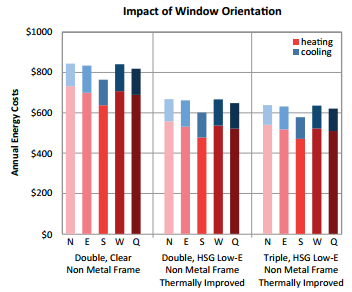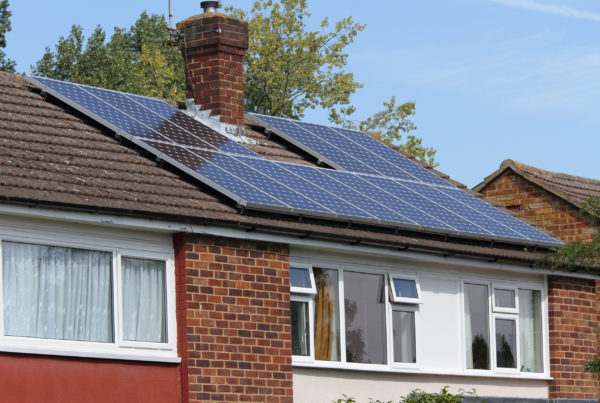
Natural sunlight is essential for ambiance and helps save lighting energy with daylight harvesting. But windows also let in heat via radiation from the sun. Window manufacturers adjust the amount of sunlight and solar radiation that pass through a window by adding tints or coatings to window surfaces. The primary means for controlling solar radiation effects is quantified by a solar heat gain coefficient (SHGC).
Let the Right Sun In
Deciding just how much solar radiation to let in is a key design question. Radiation from natural light can be used to heat a space for free during the heating season, but can cause excess cooling load and overheating problems during the cooling season. Note however, that heat gain for space heating is difficult to capture in commercial buildings. This is simply because by the time the radiation is available in the middle of the afternoon, commercial spaces often don’t need heat.
Organizations have established general guidelines for SHGCs based on climate. For cooling-dominated climates, SHGCs of 0.25 or less are recommended in order to reduce cooling loads as much as possible. For heating-dominated climates, SHGCs of 0.4 or less are recommended; a higher SHGC allows for some utilization of solar heating during the winter without adding too drastic a cooling load in the summer.
Keep on the Sunny Side (Sometimes)
Another factor in determining the appropriate SHGC is which direction the window faces. In general, north-facing windows will have the least amount of sunlight, so consider a slightly higher SHGC for these windows. West-facing windows typically have the highest amount of unwanted solar gain due to the hot afternoon sun. If west facing windows are desired, they should have the lowest SHGC in the building. Below is a chart of the impact of window orientation on heating and cooling costs for a building in Minneapolis, MN (chart courtesy of the Efficient Windows Collaborative). An important point to note in this example is that a window with a low solar gain is more efficient than a clear window, regardless of orientation.
Don’t Let the Sun Go Down on You
Though designing buildings with large windows may be appealing initially, designers must be mindful of the tradeoffs. Especially in extreme climates, lighting savings achieved from larger windows may not offset the added cooling load in the summer. Where windows are located plays a large role in window selection as well, so there’s not a one-size-fits-all solution. In the end, harnessing the power of the sun is essential in the pursuit of more efficient buildings. And SHGCs are just another design tool at your disposal to meet your energy goals.
Figure 1: Impact of orientation for three windows in Minneapolis, MN. The results are for 15% window area with typical shading. The label “Q” refers to an average of all four directions. Source: “Design Guidance for New Windows in a Cold Climate”, retrieved from: http://www.efficientwindows.org/downloads/ColdDesignGuide.pdf



